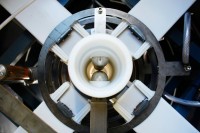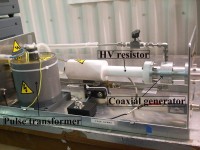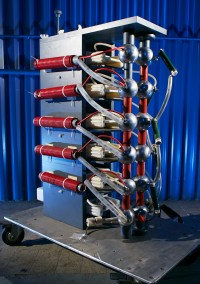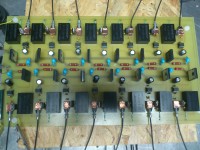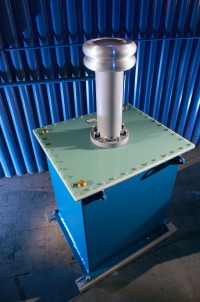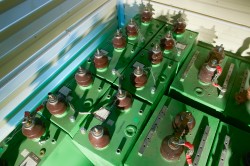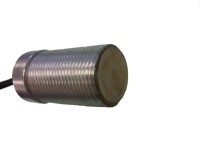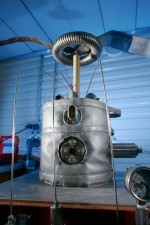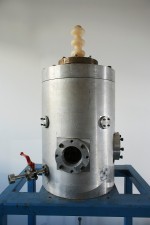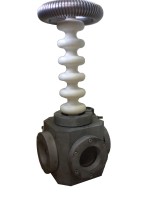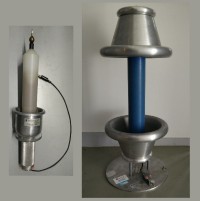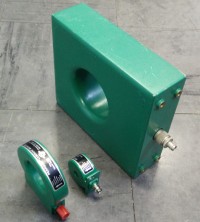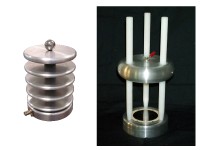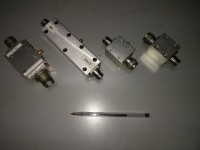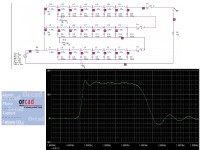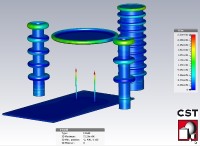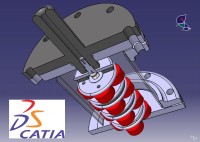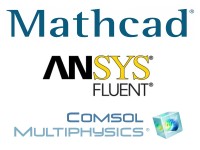High Voltage Processes Plateau(PHT)
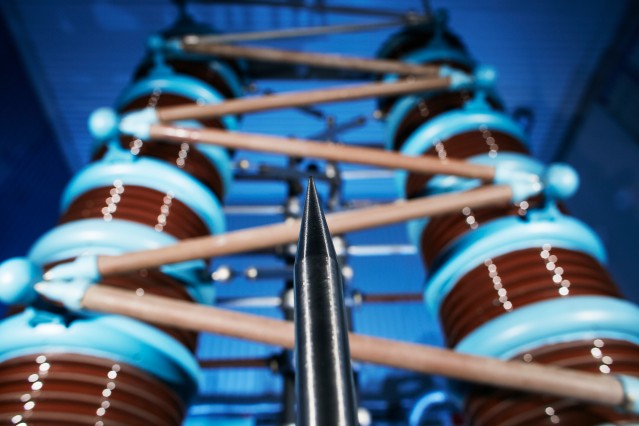
This tray is part of the UPPA Instrumental Service Centre: UPPATECH
The activities grouped on this platform are linked to the SIAME High Voltage Processes Team and can be grouped under 4 main headings.
Below is the video presentation of the plateau shot and directed by Anthony LACAZE from LinkMedia.
High voltage pulse generation
The High Voltage Processes team has implemented a large number of voltage pulse generation devices based on Marx generator, pulse transformer or switch architectures. The specific characteristics of the available generators are diversified to investigate various applications such as voltage resistance tests (normative or not) of electrical devices, lightning conductor tests, electroporation, gas electrofiltration, electromagnetic detection or interference....
Concerning the normative tests, it is possible to generate at the platform level the following normalized waves:
- Lightning shock in voltage 1.2µs/50µs up to 250kV,
- Operating shock 350µs/3500µs up to 650kV.
The above pulse generators can also be used for electrical discharges into gases (air, nitrogen, hydrogen, SF6), liquids (water, oil) and solids.
The most significant example is the Marx 1MV/27J generator available in the 6m HT Hall under the ceiling. It is likely to generate 1.5m long discharges into the air at atmospheric pressure.
Examples of available structures (click on the images to zoom in):
|
|
Generation of high pulse currents
The High Voltage Processes platform is also equipped with a set of high energy storage devices and current pulse shaping systems allowing the generation of standardised lightning shock waves in current 8µs/20µs up to 40kA and 10µs/350µs up to 5kA but also current pulses up to 200kA on low impedance. This set of equipment makes it possible to study discharges into water and/or liquids for applications such as cold work, crushing, separation and/or extraction of products.
Examples of available structures (click on the images to zoom in):
|
|
|
|
Metrology and electrical characterization
The realization of impulse generators is accompanied by the design of associated and adapted measuring devices. As a result, the team has commercial or internally developed equipment for measuring voltage, current, electric field and optical characterization of phenomena.
-
Transitional measures: Real-time oscilloscopes (Tektronix) up to 6GHz, Sequential oscilloscope 6GHz, Voltage probes and dividers (Northstar, Tektronix) 40kV/40MHz, 100kV/80MHz, 150kV/20MHz, capacitive dividers 250kV/300MHz, 500kV/50MHz, Coaxial capacitive probe 20kV/5GHz, Current probes (Pearson) 500A/200MHz, 2kA/120MHz, 5kA/20MHz, 50kA/4MHz, 200kA/2MHz, Montena field sensor up to 3GHz.
-
Frequency measurements: Scalar network analyzers allowing characterizations in the 300kHz/1.3GHz band and vectorials from 300kHz to 6GHz and precision multimeter scanning the 4Hz/8MHz band.
-
Optical characterization: Photomultipliers (UV and IR) with rise time up to 1ns
-
Measurement of transient electric fields in water by Kerr effect using a 658nm/10mW fiber laser and a 1GHz/1mWOPT=1VELEC electro-optical converter
-
Test bench for thermoelectric modules
Examples of available structures (click on the images to zoom in):
|
|
|
Simulation software package
The use of simulation often allows judicious interpretations of results through more parametric analyses and less demanding in terms of development time and cost. However, Simulation is not an alternative to experimental study but a complement that usually makes it possible to precede experimentation and extend the study to configurations that are difficult to carry out physically. Thus, various simulation tools are available at the platform level in order to:
-
to advance, more easily than by experimental tests, in the knowledge of the electrical and/or electromagnetic behaviour of the different systems
-
to define the optimal configurations by analyzing the characteristics of the pulses to be generated or measured
-
to make settings easier than by the experimental way.
In particular, we can mention the Pspice (electrical circuit simulations), CST Studio (electrostatic and electromagnetic simulations), CATIA (mechanical design) or COMSOL (multi-physical simulation tool) softwares.
|
|
|
|
|
|
